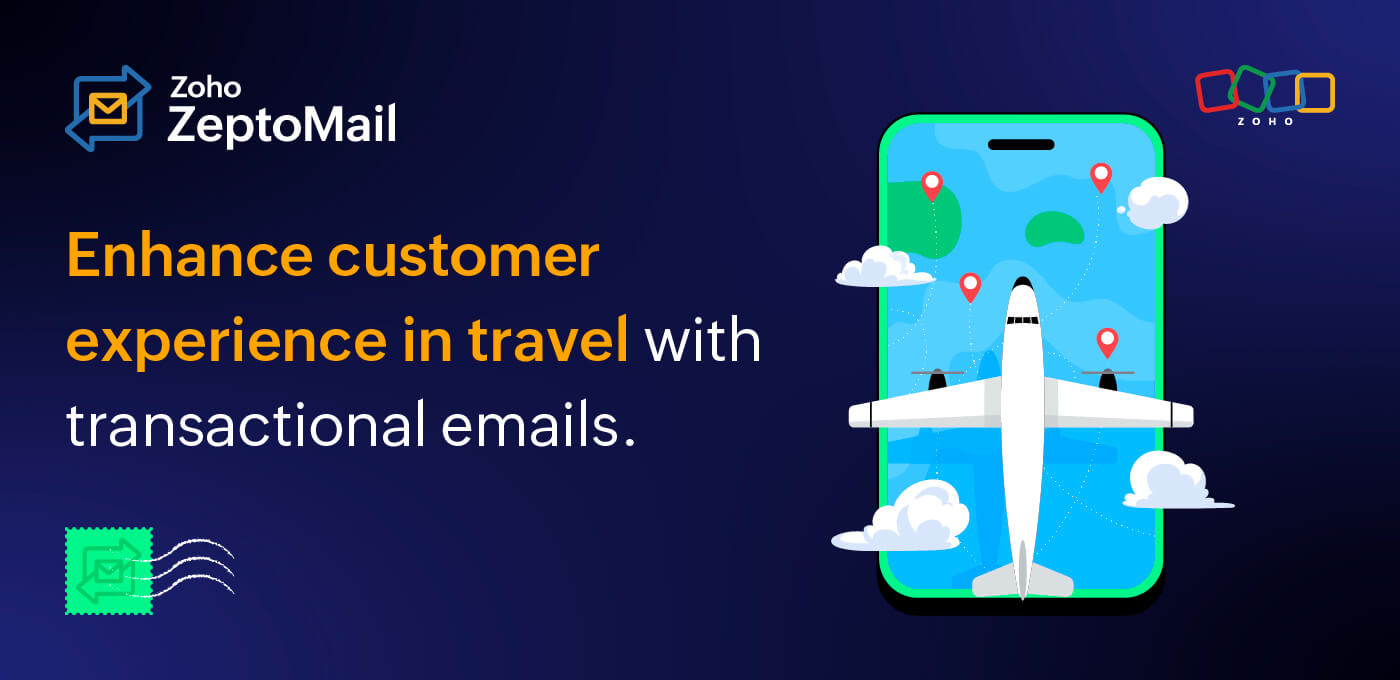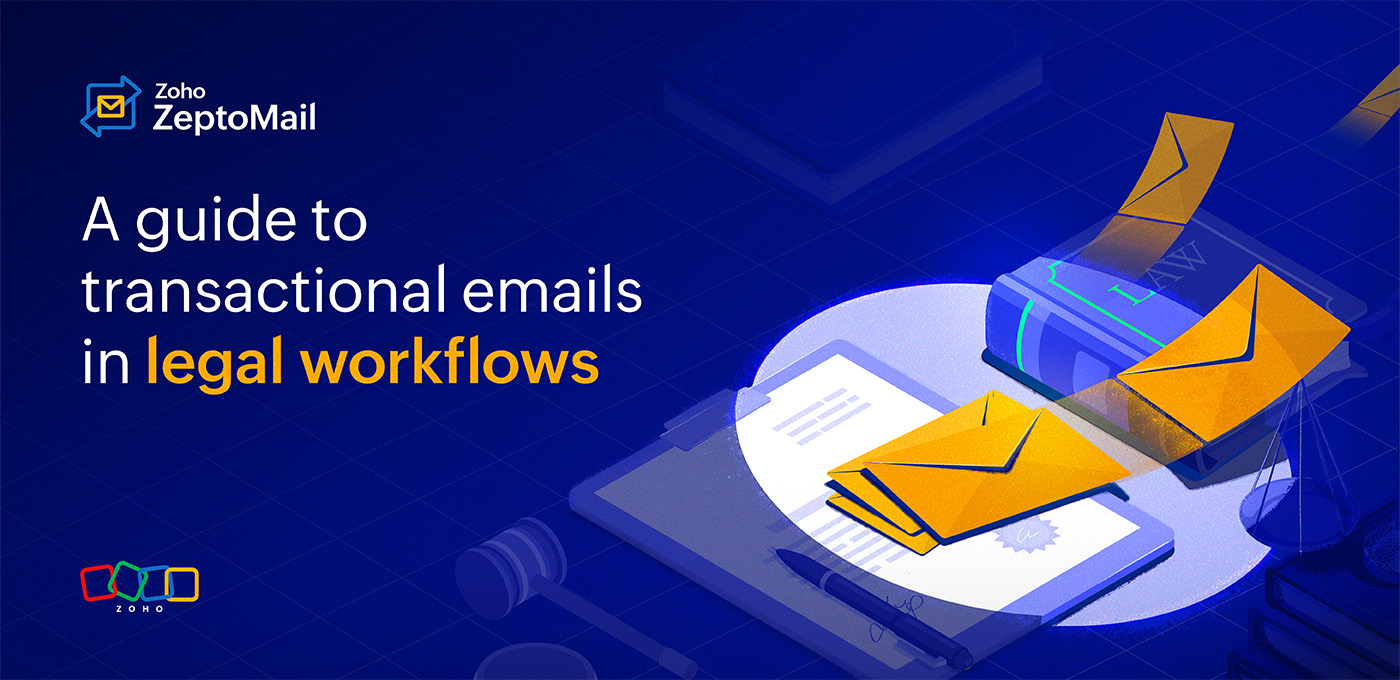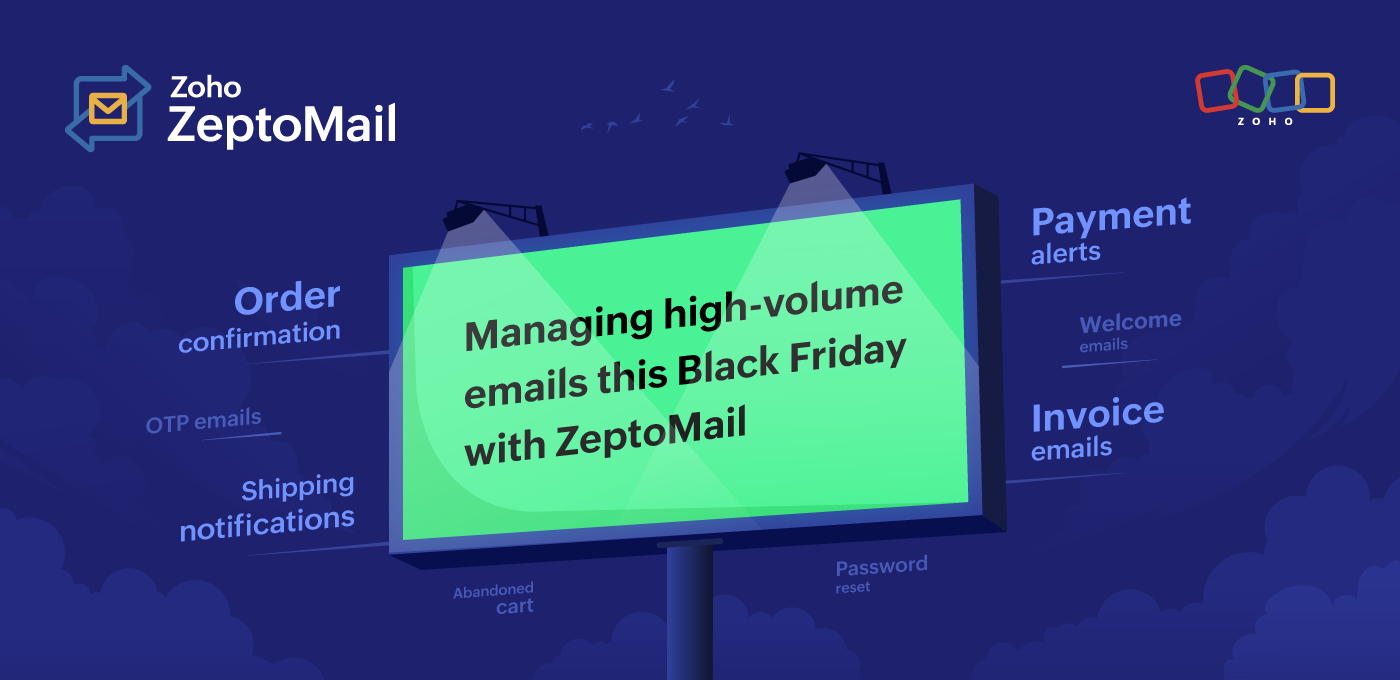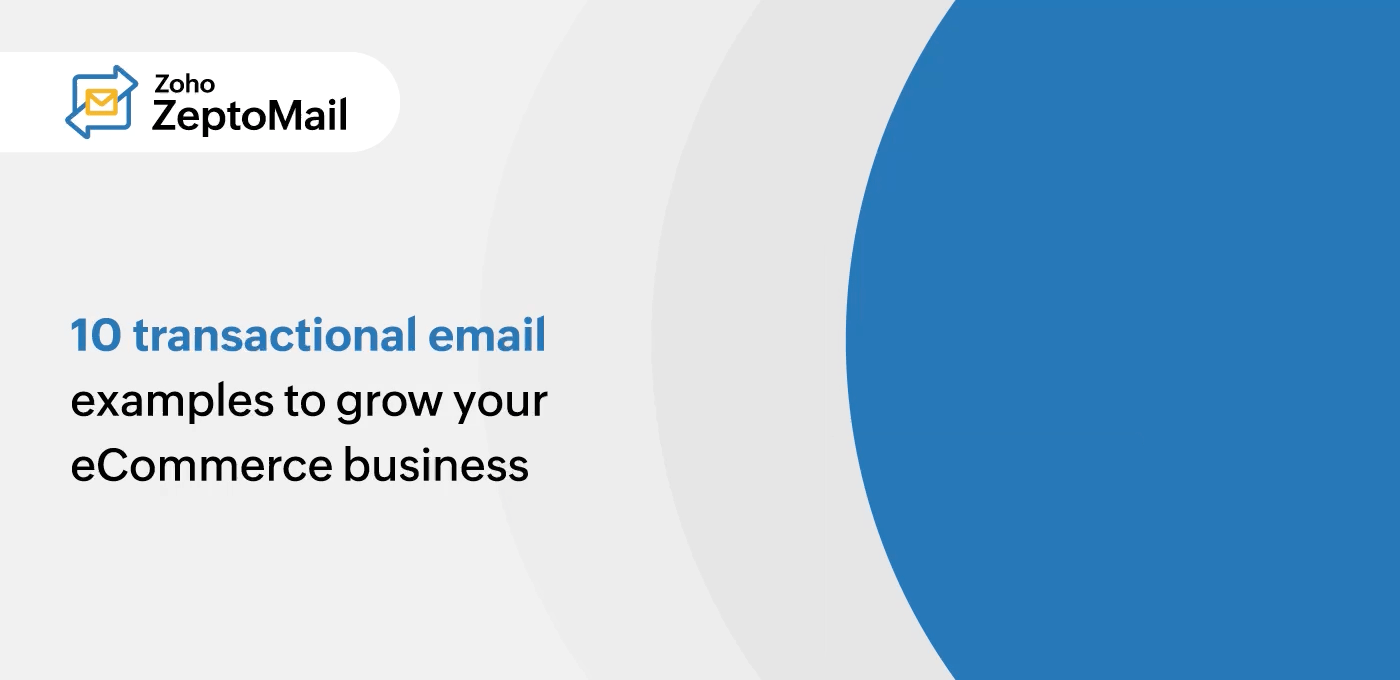Transactional emails in travel: Keys to maximizing customer experience
- Published : January 22, 2025
- Last Updated : May 26, 2025
- 173 Views
- 8 Min Read
The travel industry has reached its peak since its sabbatical during the pandemic, with the industry getting back on its feet as people once again embrace the joy of travel. This resurrection has changed the way people are planning their travel experience, too.
There has been a gradual and solid shift to the use of online platforms. Gone are the days when one had to visit a physical travel agency to book their tickets and receive itineraries. Now, they can plan everything from the comfort of their home in just a few clicks. At the heart of these interactions are transactional emails, the unsung heroes of this experience. These emails provide critical information to customers, from flight confirmations to pre-travel reminders.
If your business is in the travel industry, you're probably already sending these emails to your customers. This article explores the type of transactional emails you'll be sending, why they're important, and tips on crafting them effectively.

Why do transactional emails matter?
Transactional emails are sent as an acknowledgement for an action a customer performs on an application or website. They're customer-specific and vary from customer to customer based on their needs. Transactional emails are an essential link to any business in the following ways.
They validate transactions
Transactional emails are a receipt for the action a user performs. This is important in the travel industry because, when a user books a service, they'll be eagerly waiting to know their order status. Considering the significant investment involved in travel reservations, these emails provide reassurance by validating their purchase and confirming their booking.
They help with customer retention
Customers anticipate transactional emails. This is why they have high open rates when compared to marketing emails. Leveraging this opportunity by ensuring prompt delivery will help build better relationships with your customers. This consistent communication with your customers helps build trust. Trust in your business encourages them to continue using your service and evolve as a lifetime customer.
Cross-selling opportunities
It's important to avoid all or any form of marketing content because it can come across as intrusive and leave a negative impression. Subtle, contextually relevant suggestions are acceptable if they're not too pushy. For example, a hotel booking website can include links to car rental services that will genuinely benefit the customer.
Given the weight these emails have, the key is to ensure timely and secure delivery. Any delays can leave the customers frustrated. In industries such as travel, where customers have invested a significant amount of money in bookings and are awaiting their confirmation, the stakes are higher. This is why it's crucial to choose a reliable email sending service. The service should be able to handle the email load as well as deliver emails on time.
One such service is Zoho ZeptoMail. ZeptoMail's expertise in delivering transactional emails ensures that customers receive their email without delay. By leveraging ZeptoMail's capabilities, businesses in the travel sector can build trust, improve satisfaction, and build long-term customer loyalty.
Essential transactional emails for the travel industry
Irrespective of the specific sector of the travel industry your business operates in, you'll be using transactional emails for your communication.These are the key types of emails you should send and the best practices for crafting them effectively.
Welcome emails
Welcome emails are sent to users when they sign up for your service for the first time; for example, users signing up for a travel or accommodation service. These emails are the first point of contact you'll have with your customers and have an open rate of 50%. They provide a good avenue to make a first impression that sticks.
Best practices
- Include the user's account details.
- Offer access to discounts and offers for first-time subscribers.
- Mention the next steps they can take, like exploring the services or completing their profile.
- Link your company's social media profiles to help customers learn more about your brand's story and values.
Password reset emails
Many users make mistakes when trying to remember passwords. This is why password reset emails are some of the most commonly requested transactional emails. Because customers have their passwords saved on their browser or application, there is a higher possibility of them requesting a reset email.These emails should be delivered promptly because they're time-sensitive and critical to maintaining customer trust.
Best practices
- Don't share the actual password; only share the URL that the user can use to reset the password.
- Clearly mention the expiration time of the URL to encourage timely action.
- Include details about the user or the device that initiated the password reset request.
Confirmation emails
Confirmation emails are the most common type in the travel industry. Transport, accommodations, and vehicle rental confirmations fall under this category. Confirmation emails in the airline sector contain the flight ticket apart from the confirmation details. This keeps the customer notified of their booking and gives them the opportunity to cross-verify the details.
Best practices
- Clearly outline the booking information, such as dates, time, destination, or accommodation details.
- Provide clear instructions to the location for accommodation bookings.
- Outline your cancellation policy and refund procedure.
- Provide contact details for customer support in case they need any assistance.
Receipts and invoices
Receipts and invoices act as acknowledgment of financial transactions. These emails provide proof of the transaction that can be referenced later.
Best practices
- Outline all of the details of the transaction and booking.
- Include a downloadable copy for reference.
- Add your company's contact information for payment-related queries.
- In case of invoice emails, outline the biller's details clearly, along with the billing date and due date. It also helps if you add a QR scanner in the invoice to make it easier to submit the payment right away.
Upgrade emails
Some airlines allow customers to "bid" for a higher service class in case of any seat availability. Information about such availabilities will be sent through emails. The customer will have an option to either opt for it or decline it. If a customer bids for a seat upgrade, further updates will be communicated through subsequent emails.These emails include the bid confirmation, upgrade confirmation, new boarding passes, and upgrade cancellation emails.
Best practices
- Send clear, timely updates on seat upgrade availability and confirmation.
- Send the new boarding pass as soon as a bid is approved.
Reminder emails
Reminders are a great way to inform the customer about their scheduled travel or accommodation. This allows them to make any last-minute adjustments and prepare accordingly.
Best practices
- Send reminder emails well before the scheduled travel or stay.
- For accommodation reminders, mention the check-in time and relevant details.
- For flights, mention the boarding time, gate number, and terminal details.
- Include any weather forecasts, scheduling updates, or travel advisories.
Boarding pass emails
Airline bookings have the provision to check in earlier and generate a boarding pass. Sending boarding passes well in advance streamlines the check-in process and helps customers avoid long lines at the airport.
Best practices
- Include a downloadable copy of the boarding pass.
- Because most users view emails on their mobile phones, use a mobile-friendly format.
- Provide a quick overview of the boarding process and any related information.
Baggage tracking and recovery information
In the adverse event of a customer reporting lost or delayed baggage, the airline will coordinate with them to retrieve it. This communication will be done through emails, and are crucial in keeping customers informed. These emails should include tracking links and regular updates to reassure customers that every effort is being made to locate their luggage as quickly as possible.
Best practices
- Include the baggage tag number and the tracking link for real-time updates.
- Provide the support team's contact details for direct assistance.
- Keep the customer updated on the baggage's status and be transparent about the information.
Feedback emails
Feedbacks are a great way to learn your customers' preferences and stay in line with current trends. They provide actionable insights and help improve the overall experience. This helps businesses stay competitive and in line with emerging trends. Feedback emails make customers feel seen and are a great way to build a relationship with them.
Best practices
- Send the form promptly after the trip.
- Keep the survey short.
- Mention how long it will take to complete the survey to set expectations.
Best practices while sending transactional emails
Use a reputed source
Given the essentiality of transactional emails, it's critical to send them on time. They should have excellent delivery rates. Sender reputation, which is determined by combining the domain reputation and IP reputation, is one of the major factors that contribute to delivery rates. The domain owner is responsible for maintaining a good domain reputation, which can be achieved by following some best practices. As for the IP reputation, that rests with the email service you use. Using a service that uses a consistently good IP reputation is important. A dedicated service like ZeptoMail enforces strict measures to send only transactional emails.
Use a clear, short From address
The From address is the face of your email. Make sure you use a valid From address that has your business's name instead of a generic name. A professional and recognizable From address builds trust with your customers. Using tools like BIMIto add your logo will further build on your brand reputation and credibility.
Keep the subject line concise
A well-crafted subject line is crucial for grabbing attention. Be sure to use a subject line that conveys all of the necessary information at once. For example, an important booking confirmation email can be overlooked if the subject line lacks clarity or impact.
Use crisp content
Transactional emails are meant to convey information about an action. So, keep the content short and direct to convey all of the necessary information. In ticket confirmation emails, you can leverage tools like Schema for emails to highlight the key details right at the top for easy access.
Use brand-focused designs
Transactional emails are important to elevate a brand's identity. So, why not design them using colors and themes that reflect your brand? This not only reinforces your brand but also makes your emails instantly recognizable.
Be warm and welcoming
As a service focused on interacting with users on a daily basis, it's important to phrase content that doesn't sound cold. This is especially important for emails like lost baggage or grievance-addressed emails. Sounding empathetic and understanding makes the customer feel valued. This will also impact your brand image. You can use dynamic email tags to personalize your emails and add a human element to the emails.
Add useful links
Keep customers in the loop with your brand by adding links to your social media profiles. This allows them to learn more about your brand's values and stay updated on new improvements.
Steer clear of no-reply emails
No-reply emails are akin to a shut door. This causes frustration for customers trying to contact you regarding their bookings. Even though it was a common practice to use no-reply emails to regulate email flow, these emails cause deliverability issues, which is undesirable for transactional emails.
Optimize emails for all devices
With most people accessing emails on mobile phones, it’s important to design emails that are responsive and optimized for different devices. Mobile-friendly emails improve readability and enhance user experience.
Use interactive elements
Just because transactional emails are informative doesn't mean they have to be dull. Tools like Accelerated Mobile Pages (AMP)allow you to add dynamic components like forms within emails. For example, customers can fill out feedback forms directly from the email without being redirected to an external page.
Be compliant of local laws
Ensure that your emails are compliant with data protection laws. These laws are in place to protect the customers' rights and their data. Depending on where you're based, make sure you're aware of the local laws in place and follow them.
Wrapping up
Sending emails for one of the largest service industries comes with its own challenges that should be handled with care. Be sure to use a service that takes care of transactional email sending quickly and securely. A service like ZeptoMail can send these emails on time without any delay. ZeptoMail has all of the tools necessary to monitor these emails' performance and help deliver excellent customer service.


